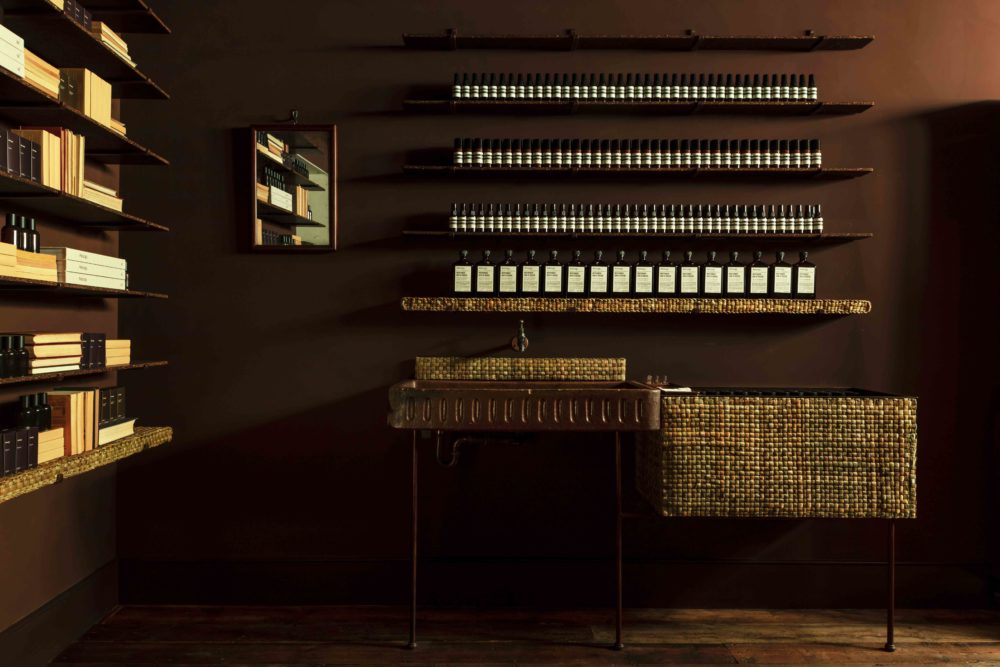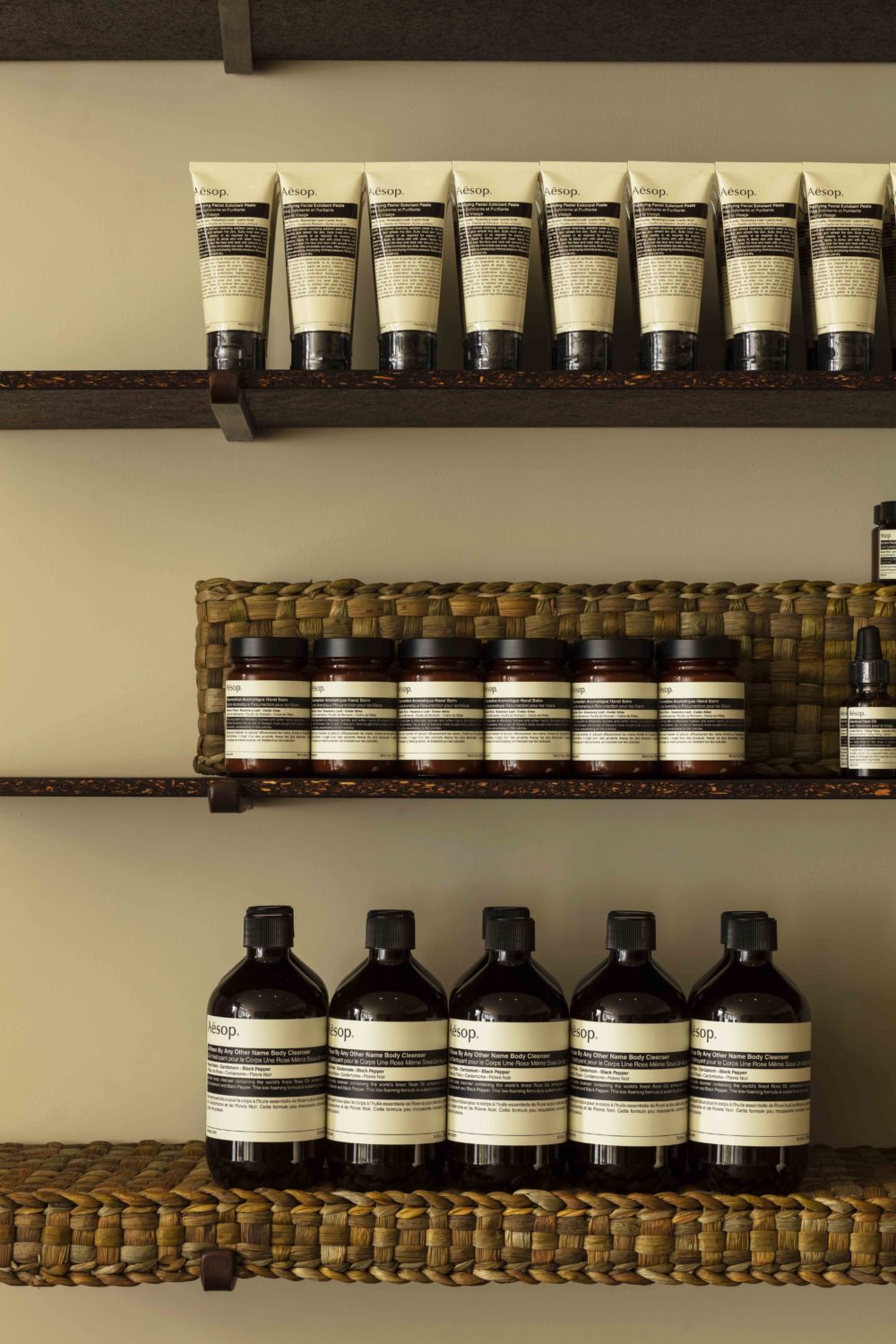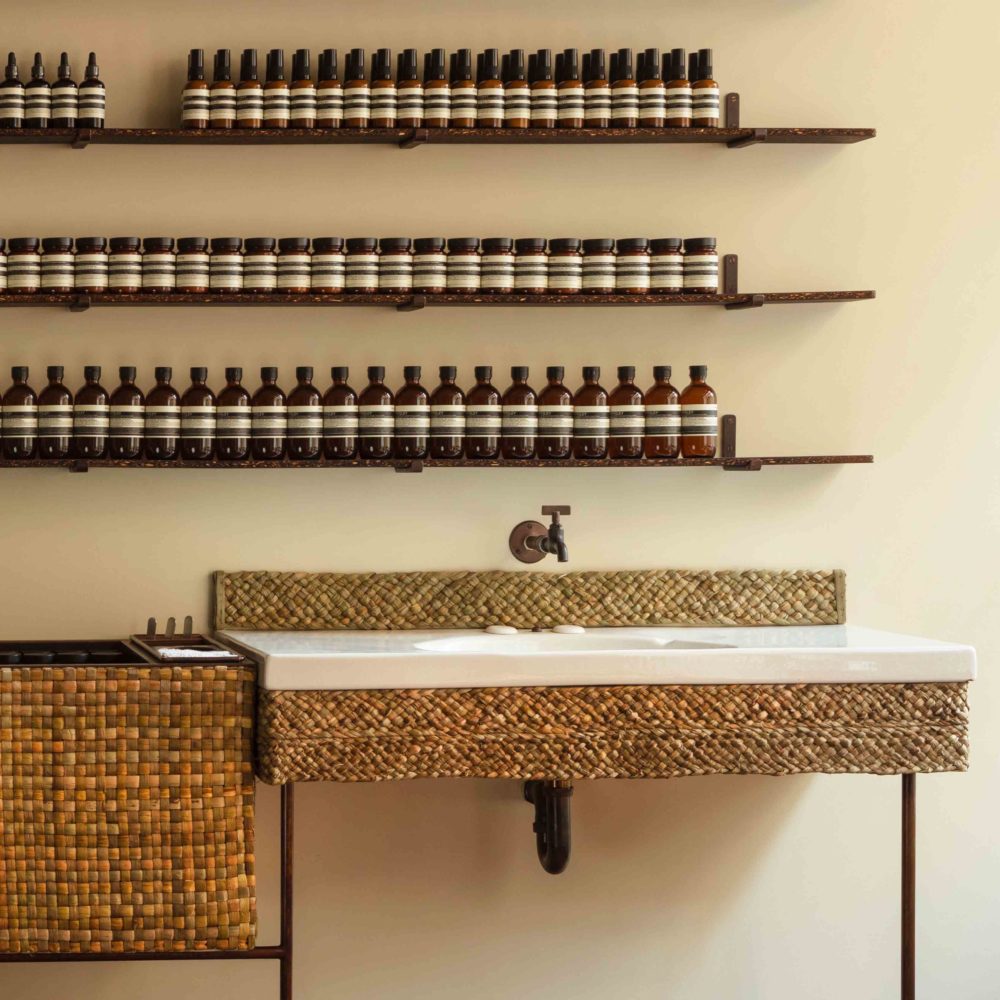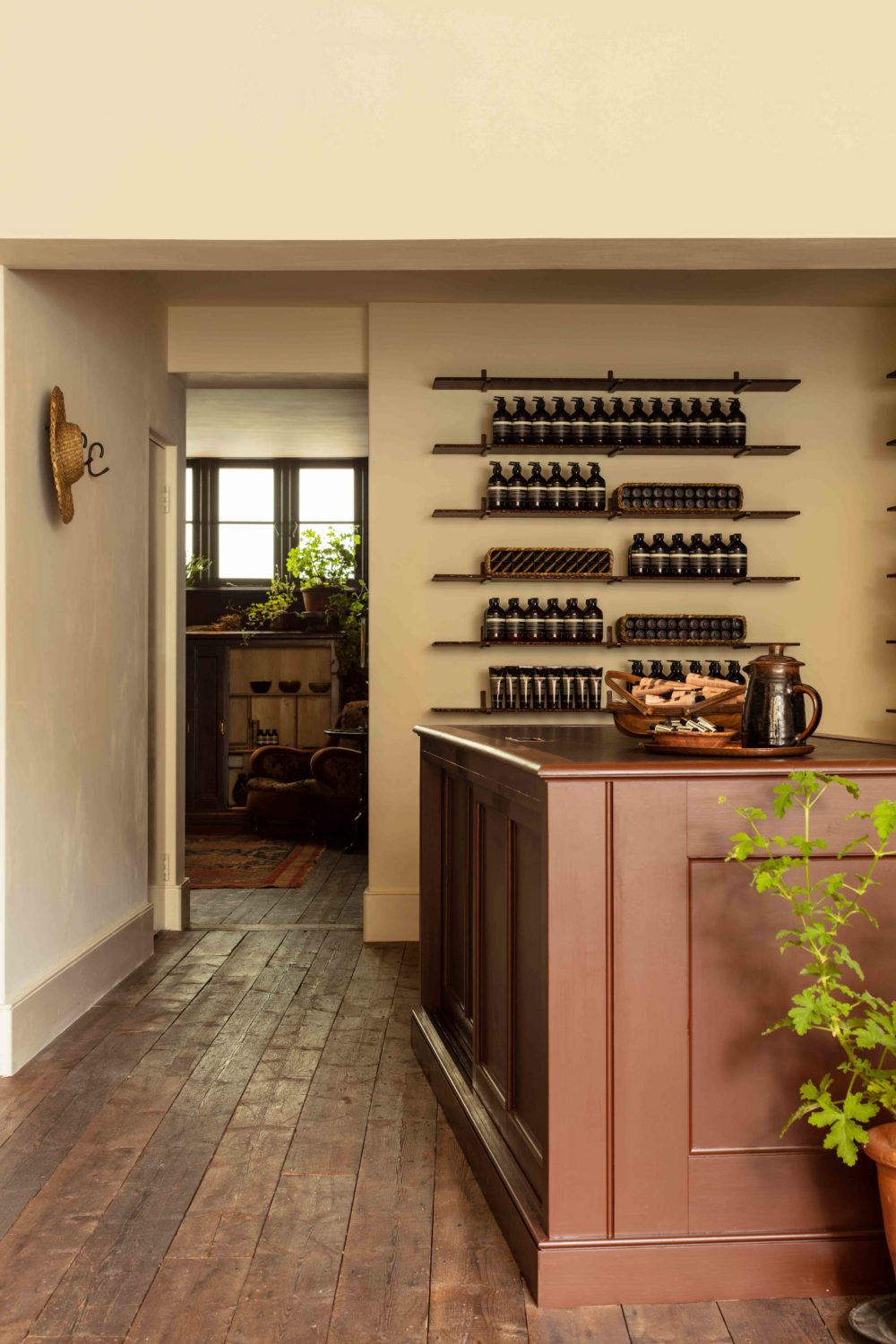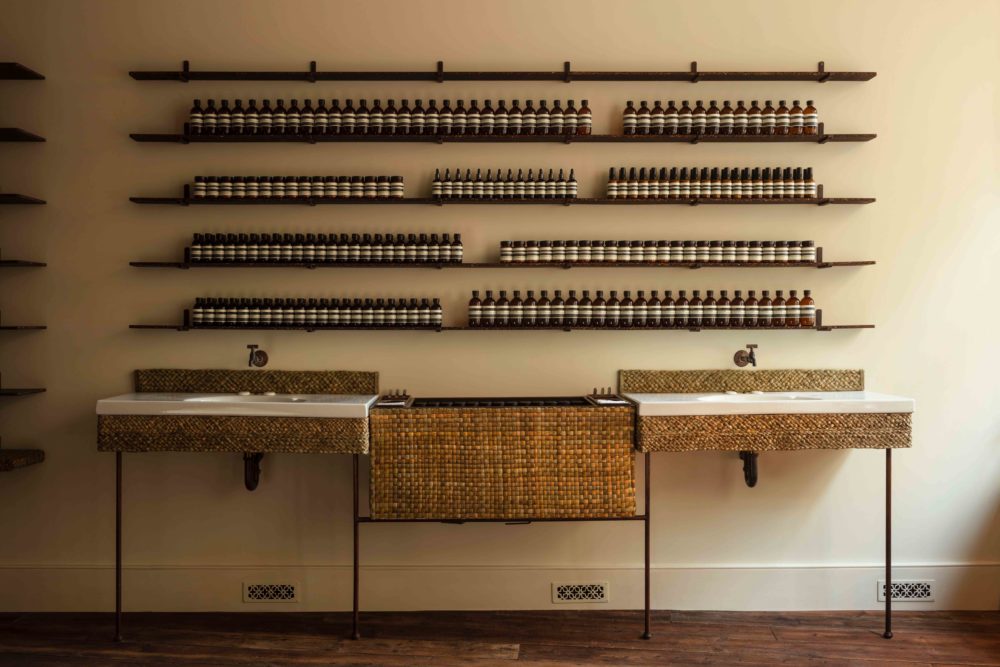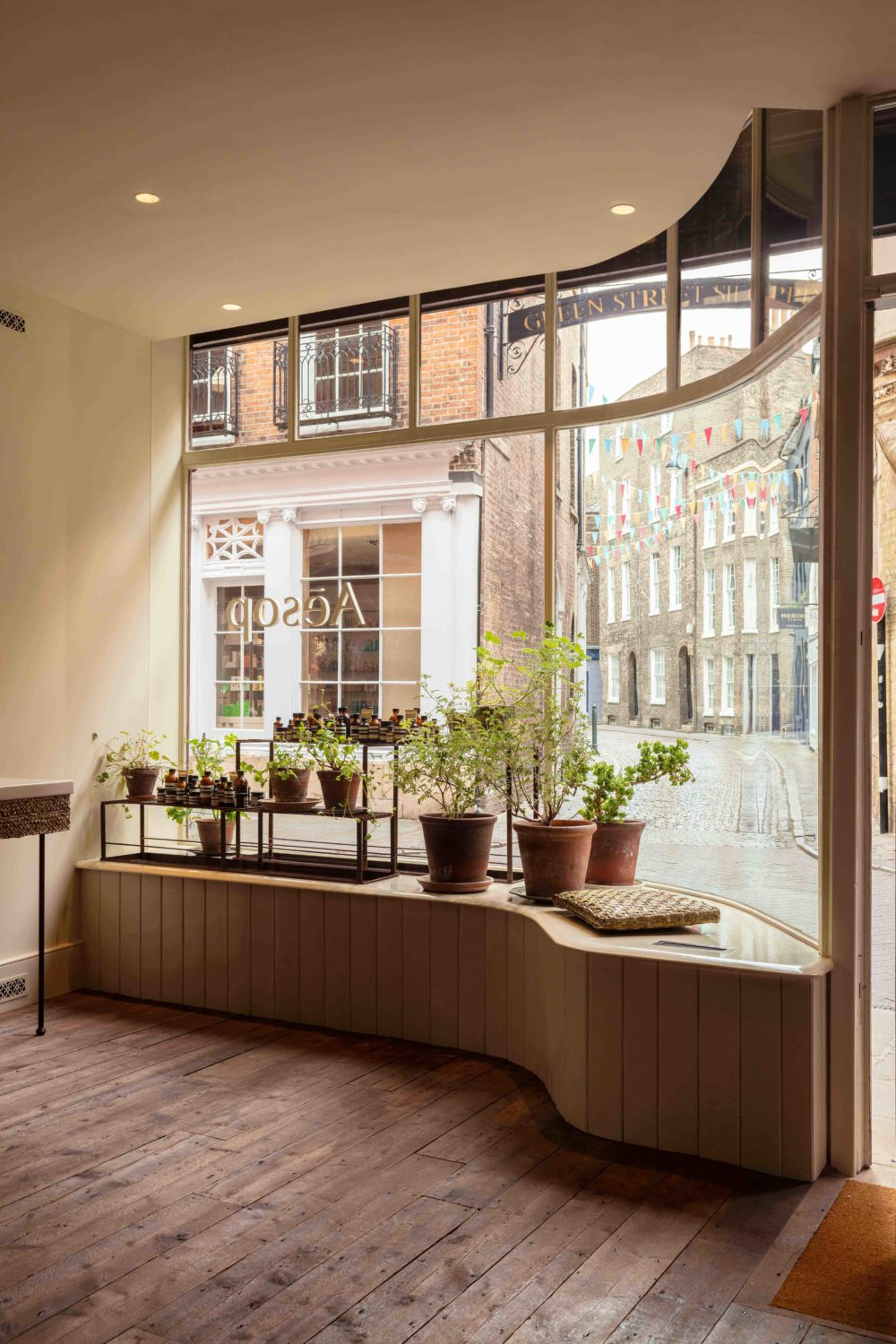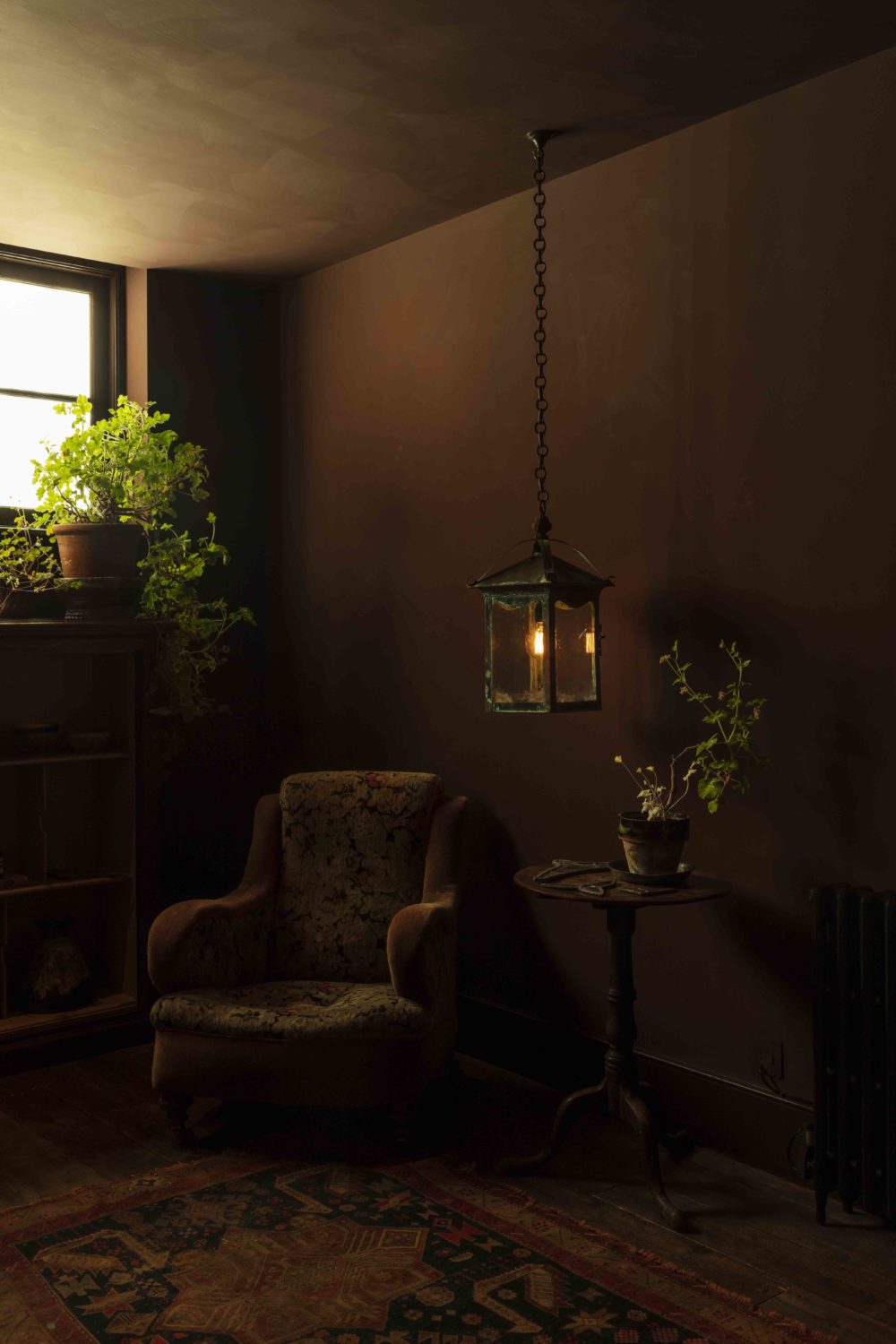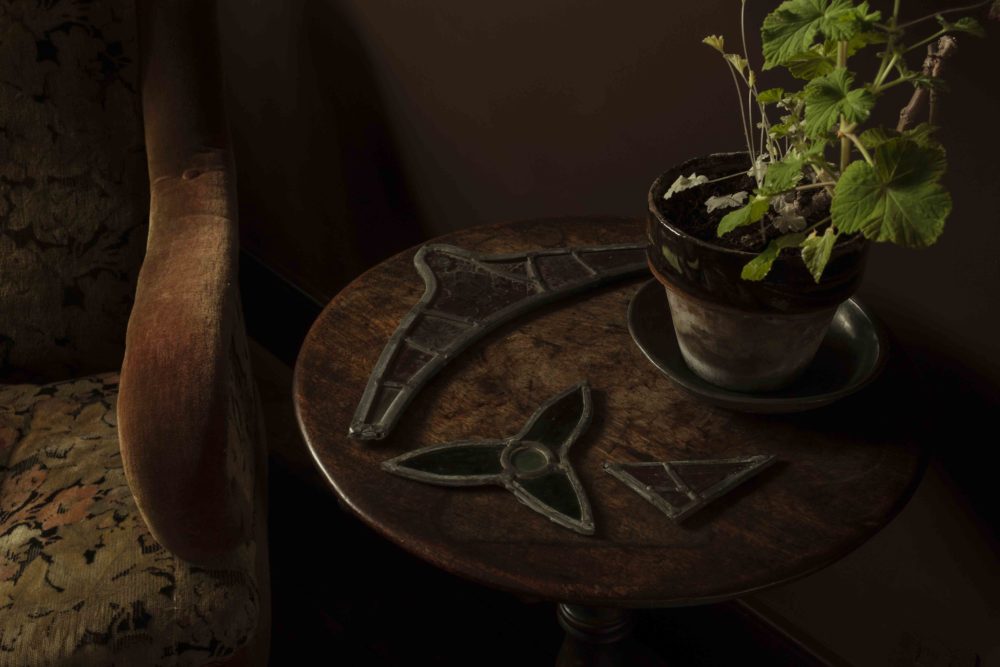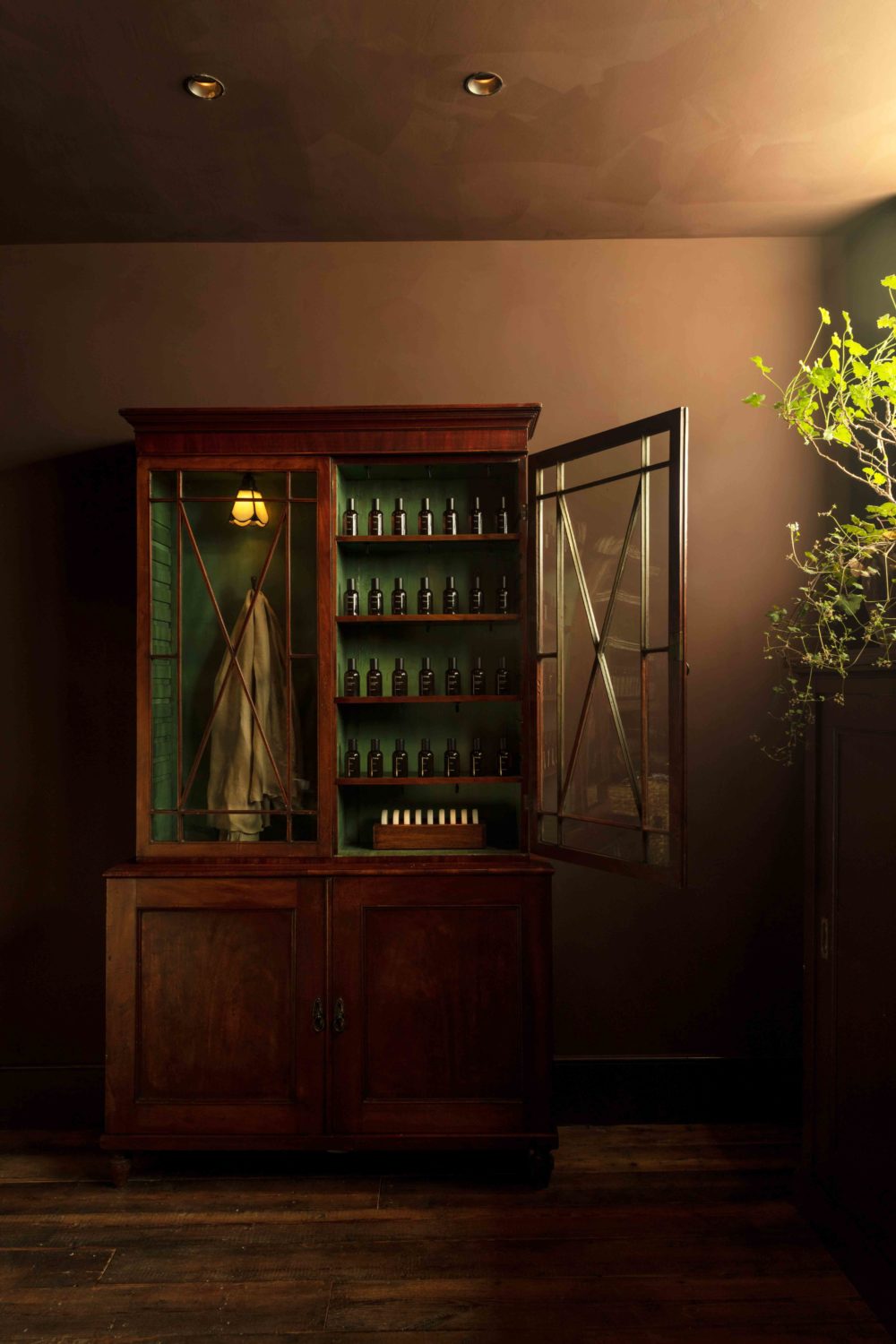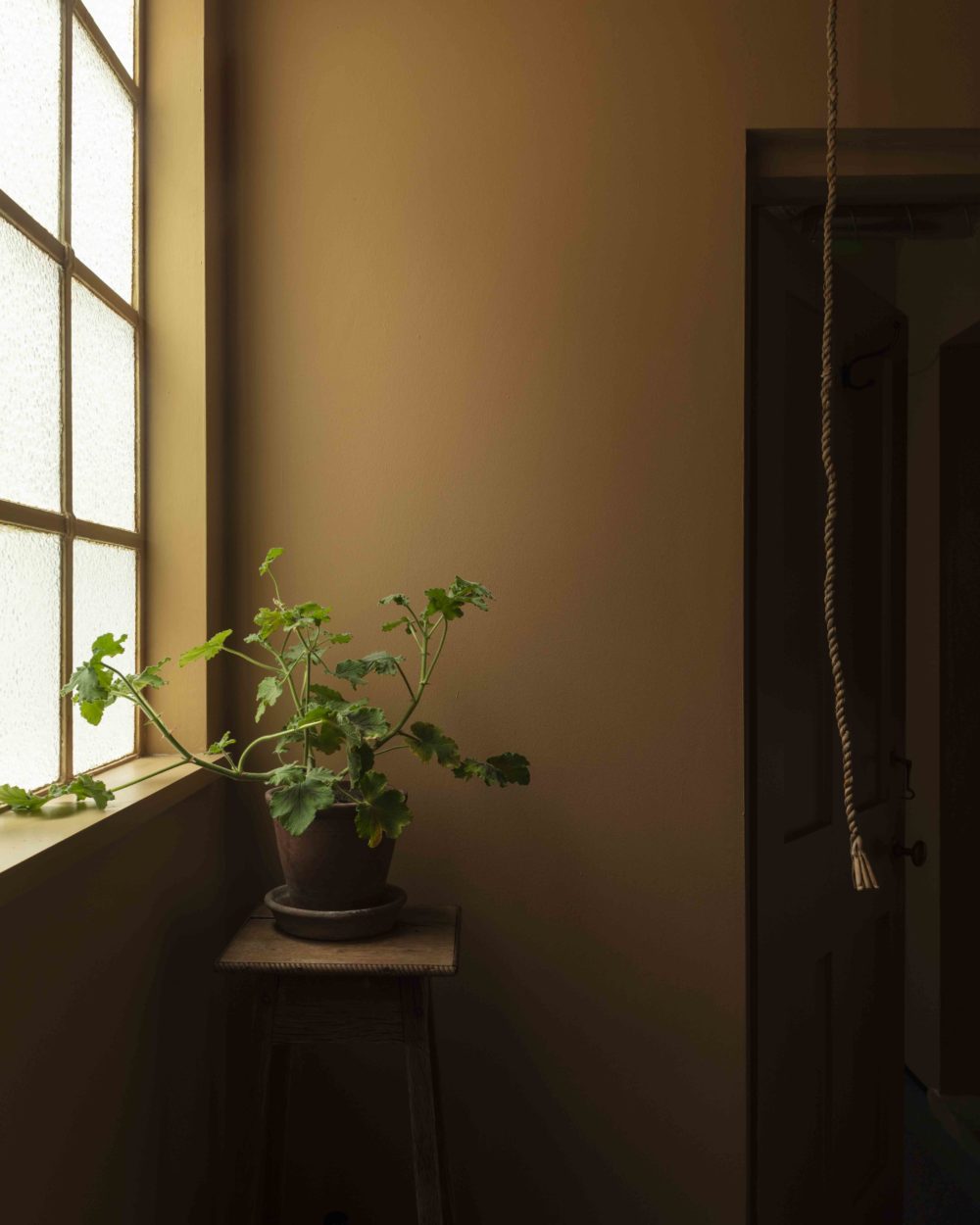Aesop Cambridge is our third collaboration with Aesop. The store is an artefact of the surrounding water and land. Proximity to academic and archival collections provided further inspiration—the store is a place to leaf through books in quiet comfort, enveloped in botanical textures and aromas. The shop is nestled proudly on Trinity Street, one of the city’s most historic commercial streets.
Like the binding of an antique book, the shopfront is the hue of well-worn leather. “If Academia were a colour then this would be it.” the designers explain. The welcoming, traditionally glazed façade, is filled with a collection of pelargoniums. “We handpicked each plant from the most charming nursery, and you can nestle amongst them on the window bench and brush against their scents.”
Beyond the entrance, the shop is comprised of two very differing personalities. Visitors journey through the light filled front space, painted a “pithy” colour – derived from the inside of the stalks of the English Bulrush – fresh, grassy and natural. They can settle in the back room, which by contrast is a dark enveloping colour – magnifying the brooding tones from the small flower of the rush.
Using both ancient and pioneering techniques, local plant matter is the primary material. A palette of the land, and of the water. Oversized shelves – reaching 4.3m in a single length – are made from English freshwater bulrush harvested and woven locally. JAMESPLUMB commissioned Felicity Irons – one of the last English rush weavers – and her team at Rush Matters, who have brought this archaic and yet renewable practice into the twenty-first century, and worked closely with them to realise the many bulrush elements in the store. The rush is hand-cut from long punts on the River Great Ouse in Cambridgeshire, then air-dried before being braided into furniture at the nearby workshop. Of working with JAMESPLUMB, Felicity said “They saw the use of our rush and weaving in such a different and imaginative way – it was a first for us in terms of making shelving. The extreme sizes that they asked us to work to were a technical challenge, and we were delighted to see rush being used on such an extreme scale, whilst also showing what a practical material it is.”
Further shelves are formed from hemp—grown just twenty miles from Cambridge—pressed with bio resin. This warm, dense, tactile material is also inlaid into cabinetry. “For us, this beautiful material recalls the burnished surfaces of old writing desks”. Underfoot, nineteenth century floorboards are polished with over a hundred years of footfall.
Antique furnishings in the back room lend a domestic feel. “From quite an early stage our projects start to take on a character of their own – when scouting antique shops and markets we can be overheard saying “this is very Cambridge” for example. But its not about a specific era or style, it more instinctive than that. When we came across the antique chair which now resides in the back room- we knew we had to have it, slightly sunken from many years of bottoms sinking into it, and honestly faded in all the right places. Its these traces of the human that we hope really bring a project to life.”
Overall, the store is heavily embued by the spirit of Jim Ede, the founder of nearby Kettle’s Yard who said “come in as often as you like, the place is only alive when used”. This, is a place to spend time in.
